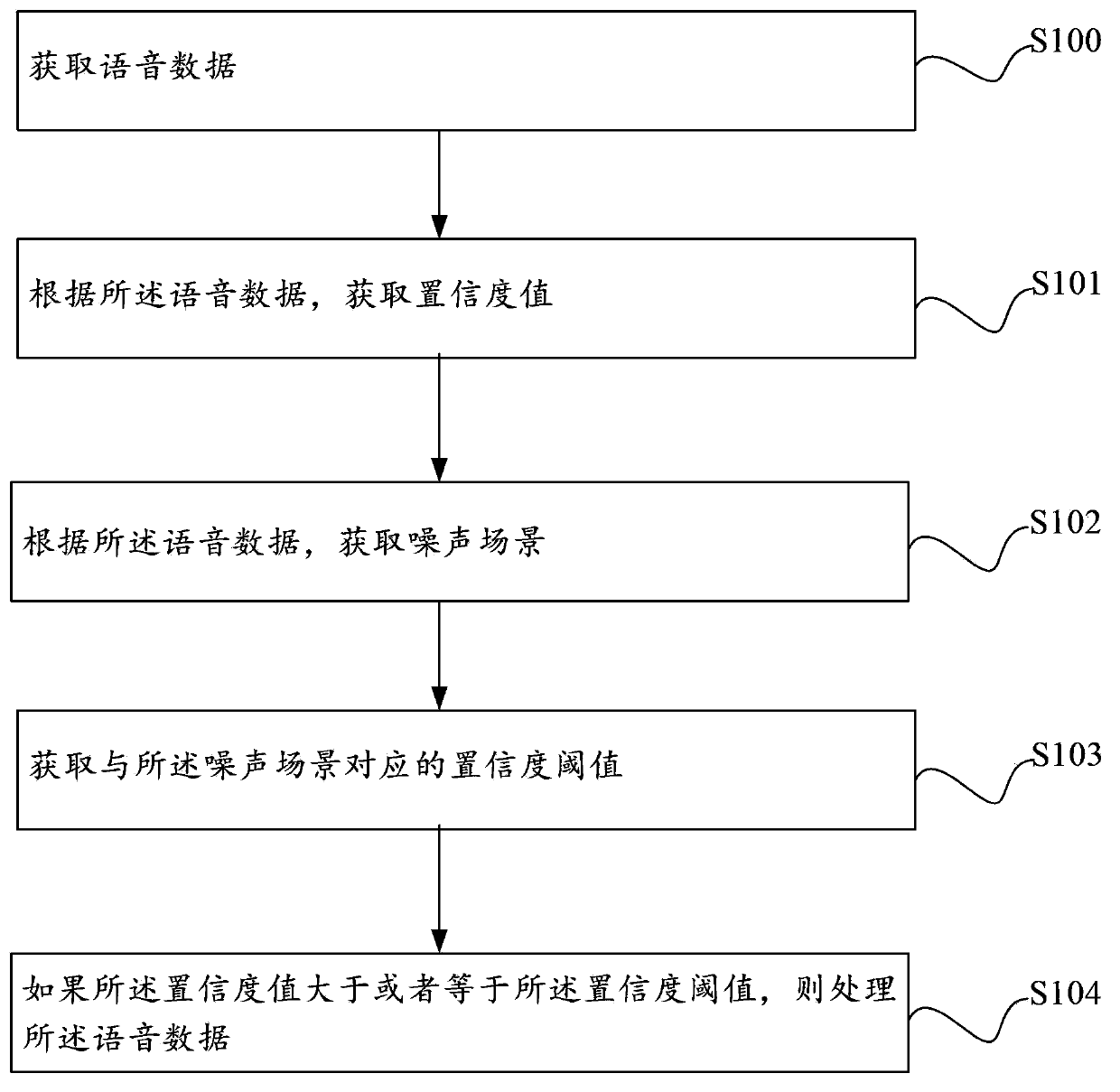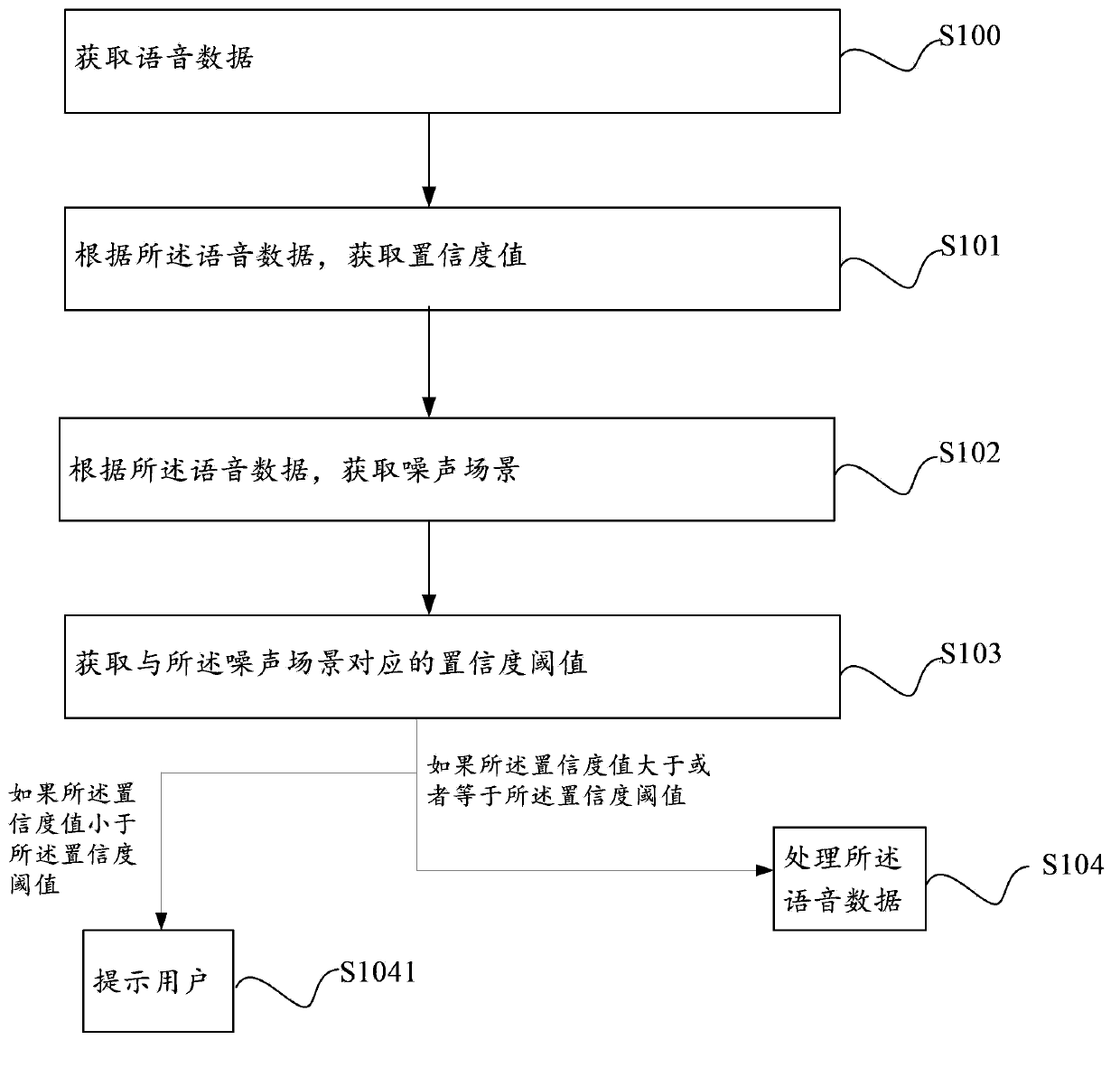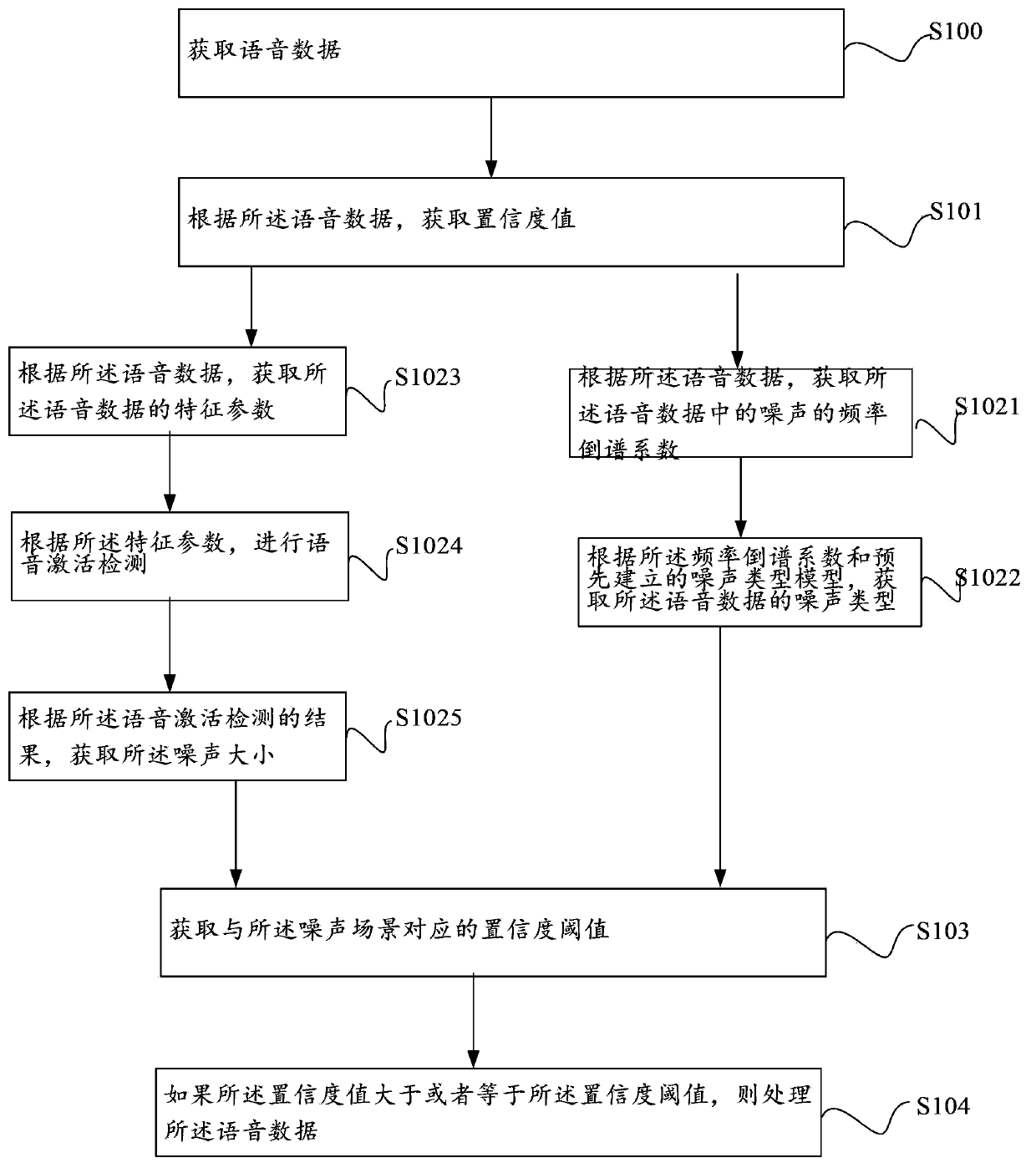Method and device for recognizing voices
A speech recognition and speech data technology, applied in speech recognition, speech analysis, instruments, etc., can solve problems such as poor use effect, insignificant improvement effect, and low recognition rate.
- Summary
- Abstract
- Description
- Claims
- Application Information
AI Technical Summary
Problems solved by technology
Method used
Image
Examples
Embodiment 1
[0040] figure 1 It is a flow chart of a speech recognition method provided by Embodiment 1 of the present invention.
[0041] Such as figure 1 As shown, Embodiment 1 of the present invention provides a method for speech recognition that may specifically include:
[0042] S100, acquiring voice data;
[0043] The user starts the voice recognition software such as the voice assistant on the device, and obtains the voice data input by the user through the microphone. It should be understood that the voice data may not be input by a user, but may also be input by a machine, including any data containing information.
[0044] S101. Acquire a confidence value according to the voice data.
[0045] The degree of confidence refers to the degree to which a specific individual believes in the truth of a specific proposition. In the embodiment of the present invention, it is the degree to which the device believes in the authenticity of the voice data recognition result. That is, the...
Embodiment 2
[0062] image 3 It is a flow chart of another implementation manner of a speech recognition method provided by Embodiment 2 of the present invention.
[0063] Embodiment 2 of the present invention is described on the basis of Embodiment 1 of the present invention. Such as image 3 As shown, in step S102 in Embodiment 1, the noise scene specifically includes: noise type; noise magnitude.
[0064] The noise type refers to the noise environment in which the user inputs voice data, that is, it can be understood as whether the user is in a noise environment on the road, in an office, or in a vehicle.
[0065] The noise level represents the level of noise in the noise environment where the user is inputting voice data at that time. Optionally, the noise size includes: signal-to-noise ratio and noise energy level. The signal-to-noise ratio is the ratio of voice data to noise data power, often expressed in decibels. Generally, the higher the signal-to-noise ratio, the smaller the ...
Embodiment 3
[0112] Figure 4 It is a flow chart of another implementation manner of a speech recognition method provided by Embodiment 3 of the present invention.
[0113] This embodiment is described on the basis of Embodiment 1, as Figure 4 As shown, the step S103 method of embodiment 1 specifically includes:
[0114] S1031. Acquire a confidence threshold corresponding to the noise scene according to the correspondence between the pre-stored confidence threshold experience data and the noise scene.
[0115] After acquiring the noise scene where the speech data is located, the confidence threshold corresponding to the noise scene may be acquired according to the correspondence between the pre-stored confidence threshold empirical data and the noise scene. That is, the confidence threshold can be obtained according to the corresponding relationship between the noise type and noise size in the noise scene and the empirical data of the confidence threshold obtained through a large number...
PUM
 Login to View More
Login to View More Abstract
Description
Claims
Application Information
 Login to View More
Login to View More - R&D
- Intellectual Property
- Life Sciences
- Materials
- Tech Scout
- Unparalleled Data Quality
- Higher Quality Content
- 60% Fewer Hallucinations
Browse by: Latest US Patents, China's latest patents, Technical Efficacy Thesaurus, Application Domain, Technology Topic, Popular Technical Reports.
© 2025 PatSnap. All rights reserved.Legal|Privacy policy|Modern Slavery Act Transparency Statement|Sitemap|About US| Contact US: help@patsnap.com



